Life cycle
Bats can only be seen hunting during part of the year, the rest of the time they hibernate and give birth to their young.
A slow winter
The aerial lifestyle of bats requires a great deal of energy and therefore a high consumption of prey. In our temperate climate, this is only possible during the summer months. In winter, the European species enter a slower mode of life, known as hibernation. For this hibernation, bats look for comfortable places such as cavities (caves, bridges, underground passages, hollow trees, ...). Generally these cavities have a positive temperature (8 to 10° on average) and a sufficiently high humidity level to prevent their wing membrane from drying out. During hibernation, their vital functions slow down, their internal temperature drops to the level of the ambient temperature, thus enabling them to survive the lack of food by limiting their energy expenditure.
Resumption of activity in spring
In spring, when temperatures rise and the insects return, the bats can resume their hunting activity. They then move to their summer roosts and hunting grounds.
From May onwards, the females gather in varying numbers, depending on the species, in warm, quiet, dark places such as hollow trees, attics, bridges or caves. In these den sites the females will give birth to their only young of the year (sometimes to twins) in early summer, at a time when insects are abundant.
Reproduction and delayed fertilisation
In autumn, as soon as the young are able to hunt on their own and before insect populations decline, both sexes meet for mating. Mating can take place in various sites depending on the species: denning, hibernation or transitory sites. Even if mating takes place in autumn, the development of the embryos does not start until spring in almost all species. This is because the females store sperm in their genital tract and ovulation and fertilisation only take place at the end of the wintering period. After mating, the bats return to their wintering grounds.
Vulnerability of bat
The low fecundity of bats is compensated by their long life span.
The fact that they do not need to give birth to many young makes bats less sensitive to exceptional climatic phenomena that could reduce the production of young, such as a cold, rainy start to the summer and therefore a lack of insects.
On the other hand, if many adults die at the same time, the bats will find it difficult to regain a large population, as they cannot give birth to more than one young per year. They will be very affected by this type of mortality. They are therefore particularly vulnerable to attacks and disturbances such as the disappearance of their roosts, the destruction and degradation of their habitats, and the massive use of insecticides.

